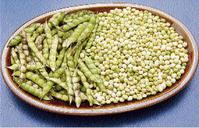
Rosalee Brown
The fatty substance, cholesterol, is produced by the liver to carry out major important functions in the body. These functions include membrane construction and making steroid for hormone production.
When the levels of cholesterol in the blood are too low or too high your disease risk is indicated. Very low cholesterol levels can indicate malnutrition or other diseases and a high cholesterol level increases your risk for heart disease and stroke.
Cholesterol is divided into various fractions. There is low-density lipoproteins (LDL), popularly referred to as 'bad cholesterol' because of the high level of fat it contains and the increased risk of affecting blood vessels causing inflammation and plaques in different areas of the body.
In the brain, this condition can result in a stroke and in the heart and surrounding blood vessels, a heart attack.
High-density lipoproteins (HDL), also referred to as the good cholesterol because of its lower fat content, has the capacity to transport cholesterol from the cells back to the liver. Total cholesterol includes both LDL and HDL.
There is another group of fats referred to as triglycerides - high levels in the blood are also dangerous because of increased cardiovascular risk. Saturated fats are also detrimental to cardiovascular health if consumed in large amounts.
Trans fat

Peas and beans are good sources of soluble and insoluble fibre which helps lower cholesterol.
Another type of fat, mainly from plant origins, which increases the risk of cardiovascular diseases are the ones which are hydrogenated. Carbon atoms are added to their chemical structure to make them hard at room temperature and, in so doing, this changes the configuration producing trans fat. It has been shown to be linked to ill health, including cardiovascular diseases. So, consume beneficial fats in the right amount. Some of sources of cholesterol are through the diet and so you have total control as you can monitor your intake.
Cholesterol is from animal sources so you can replace your source of animal protein with plant sources such as peas and beans. Peas and beans are also good sources of soluble and insoluble fibre which helps in lowering cholesterol. The insoluble fibre also works in the large intestines to get rid of bile salts, therefore, preventing transport back to the liver for cholesterol formation.
When you consume meats, consume very lean cuts and in moderation.
Consume oily fish a few times per week. These are types of fish such as mackerel, sardine and salmon which have a fatty liver, not fried oily. The fat they naturally contain are good sources of omega-3 fats which are heart healthy
Consume other foods with healthy fats in moderation such as avocado, almonds, and oil seed such as flax.
Consume three to five servings of vegetables of various colours each day.
Consume fresh fruits, about three per day, as excess can contribute to weight gain if you are trying to reduce body fat.
Consume whole grains and cereals such as oatmeal, bulgur and hominy.
Reduce intake of refined carbohydrates and consume your requirement from unrefined sources such as green bananas and local ground provisions.
Reduce intake of food made with hydrogenated fats which contain trans fat.
Reduce total fat intake.
Exercise is also beneficial as, apart from helping you to reduce body fat, it can increase the good cholesterol. Make an effort to reduce your cholesterol to safe levels by modifying your diet.
Rosalee M. Brown is a registered dietitian/nutritionist who operates Integrated Nutrition and Health Services; email: yourhealth@gleanerjm.com.

